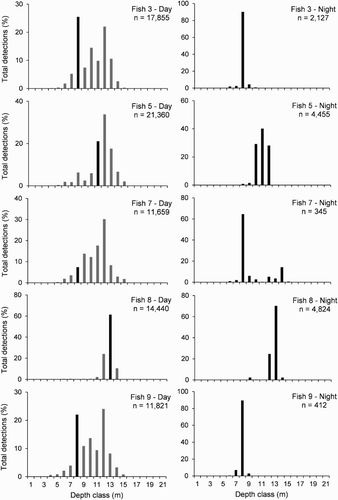Figures & data
Figure 1. Map showing: A, The study region within Australia; B, the Ironstone Hill study site on NE Kangaroo Island in relation to Gulf St Vincent and Backstairs Passage; C, the locations of the seven receivers adjacent to Ironstone Hill. The circles around each receiver indicate a 200 m detection radius.
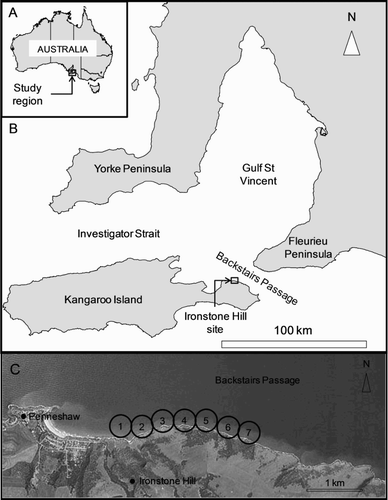
Table 1. Summary of the 10 harlequin fish tagged within the receiver array.
Figure 2. Time series of all daily detections within the receiver array for each of the 10 harlequin fish from June 2010 to October 2011. The control transmitter was detected every day and is not plotted.
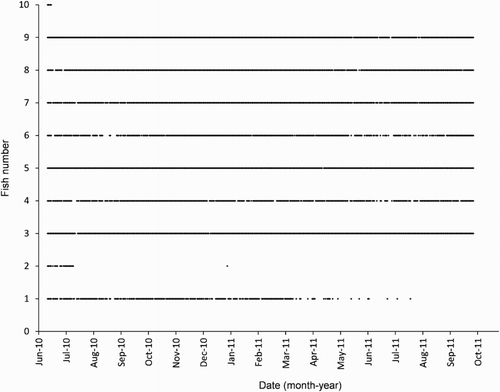
Figure 3. Receiver detections against time for the 10-day period between 8 July 2010 and 18 July 2010 for harlequin Fish 1 to 9 and the control transmitter.
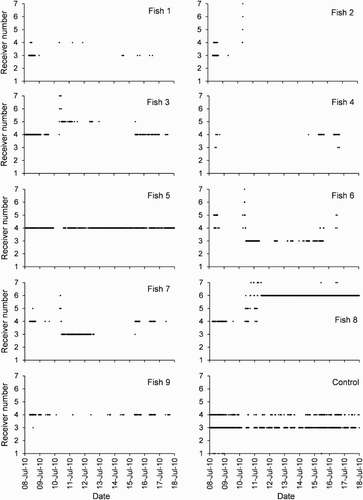
Figure 4. Depth detections against time for the 10-day period between 8 July 2010 and 18 July 2010 for harlequin Fish 1 to 9.

Figure 5. Diel activity pattern for all fish combined: mean (±SE) control-corrected standardised detection frequency per hourly bin for harlequin Fish 1 to 9.
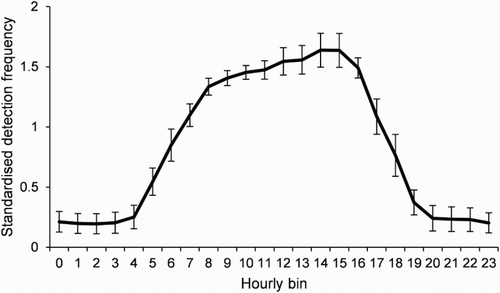
Figure 6. Depth utilisation by harlequin Fish 3, 5, 7, 8 and 9 during the day and night. Data are percentages of the total number of depth detections across 1 m depth classes for day (0900–1600 h) and night (2100–0400 h). Depth classes are 0–1 m (=1), 1–2 m (=2), etc. Note that the y axis range varies between fish. The black bar on the day graphs indicates the night modal depth.
